Solving Problems
Every design project is a problem or challenge that involves helping other people understand something. Developing design solutions to those problems or challenges is a process of problem solving. Whether the project is a logo, advertisement, or poster, questions must be answered to start the design process: What type of business is being represented? Which media would best communicate the message? What key points about the business should the design convey? There are also questions of what colors, fonts, and images should be used. The essence of an entire company, product, or service must be represented by the final design solution. It takes several steps, from concept to completion, to answer these questions and achieve the goal of creating a design that will be effective and successful in representing a business and communicating the intended message.
Visualizing how the final product may work and thinking about how the users (target audience) will receive the final product can allow for better planning. Various processes, in both thinking and design, can be practiced when generating ideas and lead to choosing from multiple ideas to the best idea. The design process presents an opportunity to either develop one great idea and elaborate on that or develop multiple solutions to the same problem. The use of preliminary sketches, drawings made prior to completing a finished product, during the design process allows for rapid concept development and a quick way to create basic compositions.
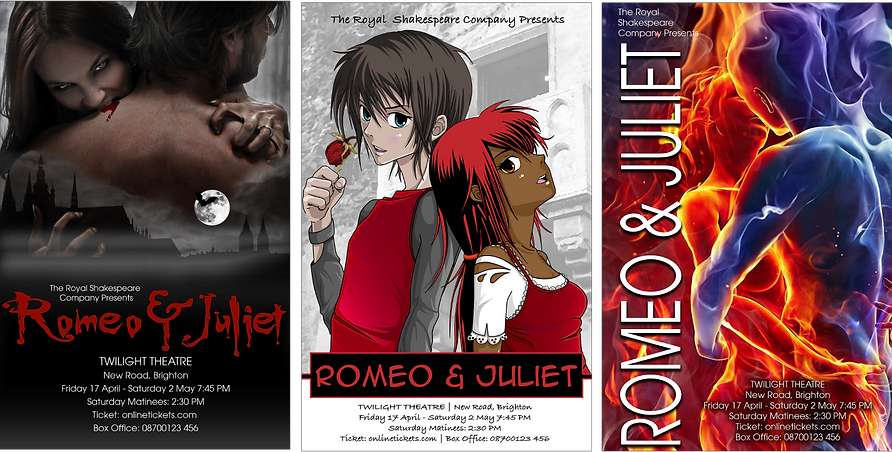


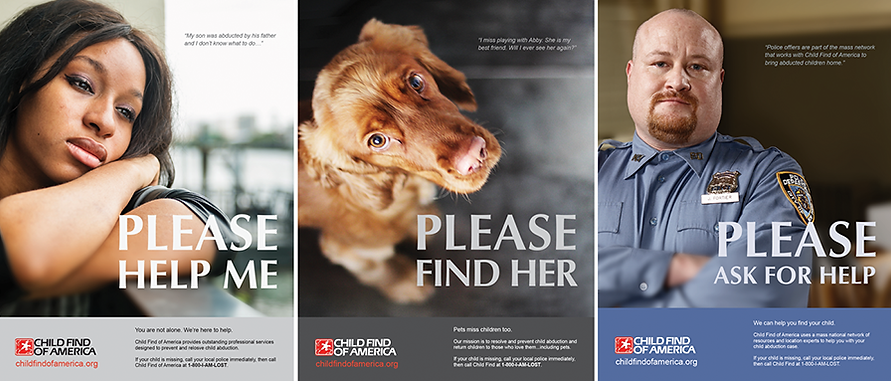
The problems presented in the following projects required effective solutions that would effectively communicate a message to the intended target audiences and successfully market an event and/or organization.
Sketches were done to visually portray the design concepts envisioned during the thought process. It was important to use sketches to create a basic compositional guide for each project as it presented a foundation for building design ideas. The final design solutions were developed from the sketches and presented as full-color, fully developed concepts.
Developing Design Solutions
Preliminary sketches were developed based three design concepts. The initial sketches exemplified basic composition of the characters and background scenes, having very few identifying details. The shapes in a composition do not need to be overt, the shapes can be implied and used as a compositional guide” (Airey, n.d.).

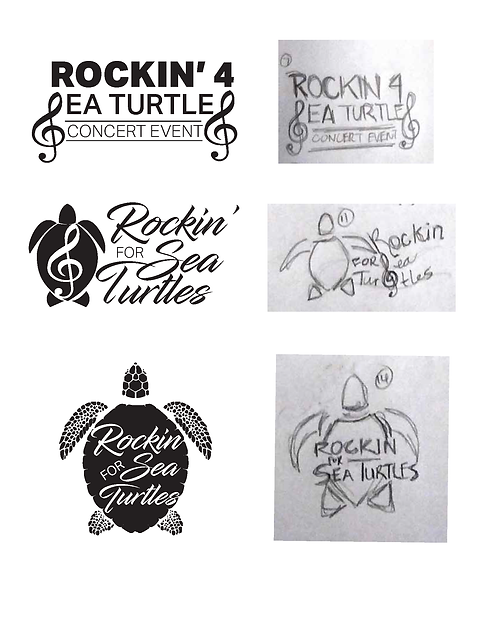
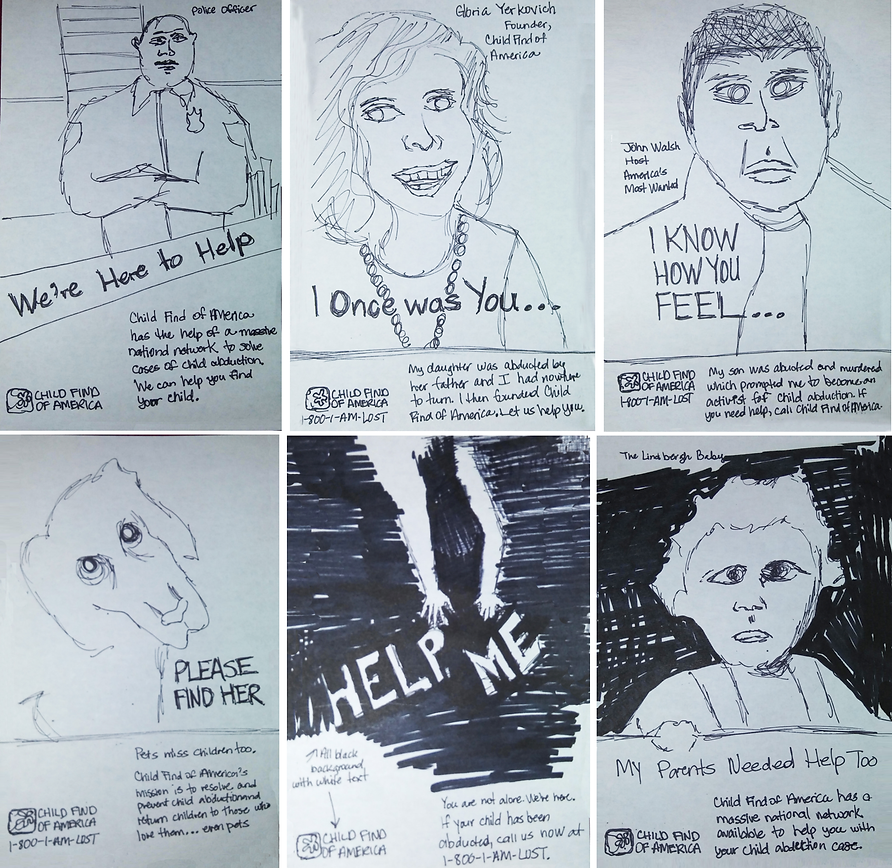
Finalized design solutions for Romeo & Juliet posters based off preliminary sketches

Preliminary sketches for a testimonial advertising campaign illustrated basic composition and various concept ideas using spokespersons. The three design concepts highlighted in red were chosen to develop as the final campaign based off how well the spokespersons featured would appeal to the target audience. Design comps were developed from the sketches.
Romeo & Juliet Posters
Testimonial Ad Campaign

Creating fully developed comps based off the initial sketches enabled me to realize the inconsistency of the ads as a unified campaign. Consistency makes a brand feel more dependable and recognizable to consumers. To establish consistency, the middle design (above) was chosen as the foundation for the entire campaign (shown below).
Second round of preliminary sketches showing more detail
Initial preliminary sketches
The final testimonial ad campaign features consistent design elements throughout the entire campaign and successfully targets the intended audience while meeting the required project objectives.
Logo design can be a difficult task at times. Visually depicting the most important characteristics of a concert benefitting sea turtles was the objective of this project. When developing the logo design concepts, using preliminary sketches at the beginning of the design process instead of going straight to the computer saved time and allowed the development of a diverse amount of options.
Concert Event Logo Design
Numerous preliminary sketches were developed for a concert event and best three options were chosen to develop as vector art.
The top three design concepts were chosen from the second round of sketches and developed as vector art. The final logo design was chosen as the design solution and was further developed.The main color was chosen as well as fonts to accompany the graphic.
Second round of sketches and the three designs chosen for the final logo
The submitted logo designs developed from the preliminary sketches didn't quite meet the required project objective, so it was back to the drawing board. The first design concepts were too intricate and needed to be simplified. Simple, clean logos read better when the size is either increased or decreased. In instances such as this, developing sketches was more time efficient than going straight to vector art.
The final logo design for Rockin' for sea turtles successfully represents a sea turtle and music in a simplistic design that is easily recognizable.
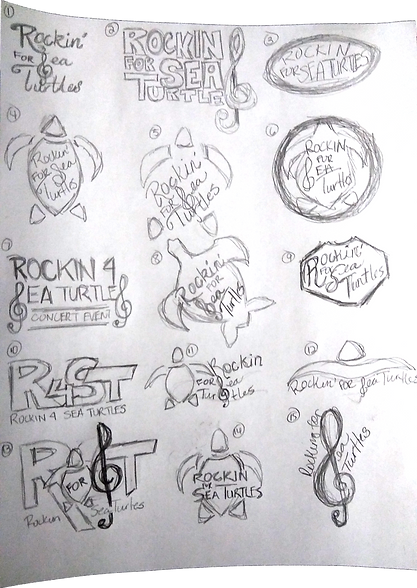


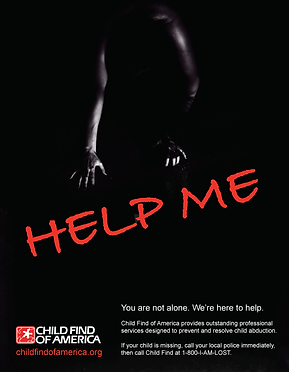

This design was chosen because it is clean and easy to read. The headline rests well on the photo without competing. The photos work with the text to guide the eye around the ad.
The second round of sketches illustrated design changes and the poster concepts in more detail. These sketches brought the project closer to the final design solutions.